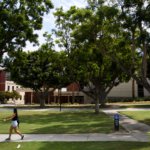
Will Chinese students return to Australia once borders reopen? Experts predict a rebound in Chinese international students in Australia next year based on a survey on Chinese internet users from mainland China.
Australian economist and Maven Data founder and managing director Elisa Choy and global migration expert and The University of Sydney associate professor Anna Boucher conducted a study and measured what the Chinese think about education in Australia and other competitor countries.
“In order to address this issue of how the Chinese feel about Australian education at present, we looked at how Chinese users on the entire publicly-sourced internet felt towards education in Australia, and how this has changed since November last year,” they said on The Interpreter.
Australia’s quality of education could encourage Chinese students to return to Australia
According to the authors, of all of the four countries considered for Chinese sentiment towards education, Australia came out as having the strongest affect measures of engagement, indicating future demand.
They also found that sentiment towards education in Australia was overall positive. Australia was followed by Canada, then the US and UK. “The level of engagement with Australian education by the Chinese market increased significantly since we last tested this in November 2020,” they said.
Other findings include:
- Chinese internet users are engaging with all levels of Australian education from primary school through to tertiary education, suggesting that the Chinese recognise and value a multitude of benefits beyond getting a degree
- The Chinese are interested in entering Australia not only as tertiary international students, but also considering the educational opportunities for their children if they come as skilled immigrants. They are also interested in Australia as a destination to acquire educational training to become teachers as well as university academics themselves
- The Chinese appear appreciative that state and local governments in Australia have sought to help Chinese students during the pandemic
- While some state governments, including the Victorian and South Australian government, are being viewed favourably, the federal government’s prolonged “hard” border closure from March 2020 was viewed as being “difficult” by Chinese internet users

Australia’s quality education and lifestyle could prompt Chinese students to return to Australia. Source: Patrick Hamilton/AFP
Chinese students: Migration could be ‘favourable’ in 2022-23
Researchers also found that Chinese sentiment toward Australian education is almost entirely positive, and this has improved since 2020.
“There are strong expectational cues among the Chinese for Australian education, which is a promising signal for Australia (despite the heated political discourse between Canberra and Beijing),” said authors. “They are waiting for borders to open and are ready to act, which provides a good basis to forecast a better-than-expected recovery of international student migration moving forward.”
Racist attacks on international students in Australia and New Zealand have, at times, been related to drops in international student enrolments.
“However, at the time that the data was collected (August 2021), these factors did not appear yet to be affecting Chinese outlook on international education in Australia, which was almost resoundingly positive,” they said.
A caveat to their findings include China’s internet censorship system, also known as the “Great Firewall”, which means content and media voices on the Chinese internet are in a “bubble”.
“Outside influence into mainland China is monitored,” they said. “However, we also note that the Chinese state is more likely to control the narrative around its own operations than around Australian policy and sentiment, so we have less concerns about bias with these findings than with issues related to Chinese politics.”
They said their findings should breed confidence in Australian policy-makers and university chiefs around possible future trends in Chinese student migration, “should the policy settings to facilitate a return to international student migration be favourable in 2022 and 2023.”










